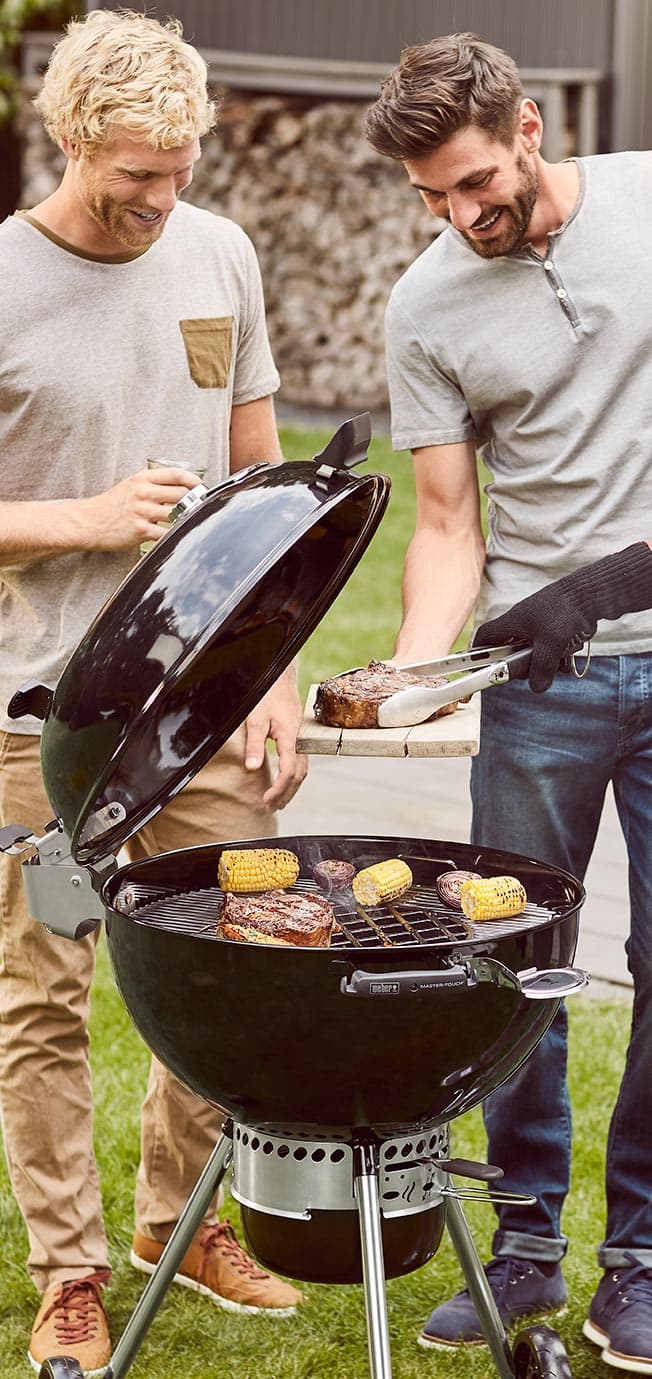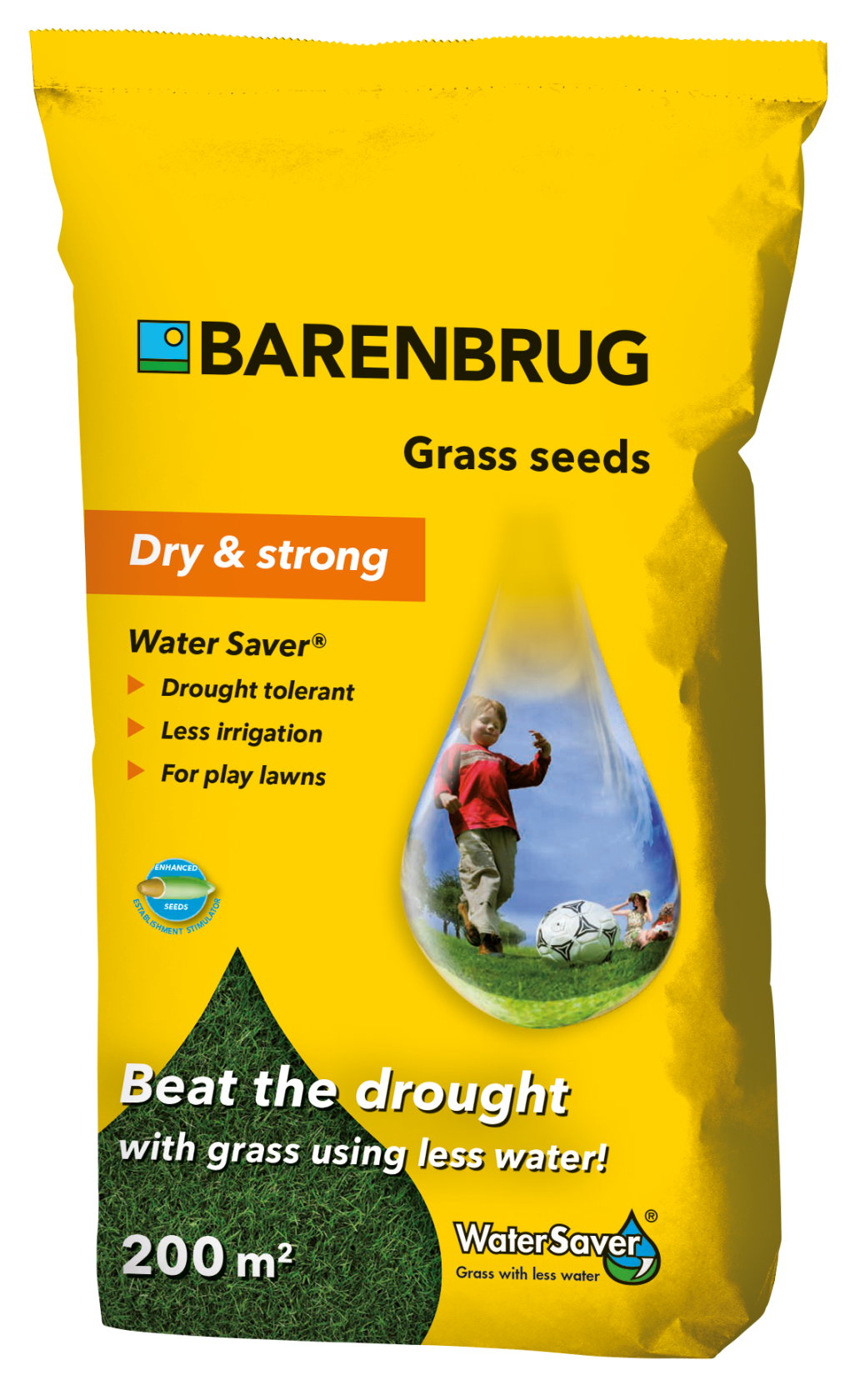
Create your own drought-proof garden
Last summer we were 'treated' to tropical temperatures. What started out as pleasant terrace weather turned into a prolonged heat wave, during which not a drop of rain fell for weeks. The fresh green lawn became a dry and yellow patch in our garden, and the borders looked more like a sandpit. Those who were lucky enough to find some water in the cistern could start carrying buckets of water. But soon, watering was forbidden, and we could only watch as the garden had to endure the drought. The future doesn't look too bright for water supplies, and the first forecasts point to another hot (and dry!) summer. A forewarned man is worth two, so this year we are better prepared!
It's too late to replant the whole garden! It is better to plant the garden when the plants are dormant (from October to March). During this period, the plant requires little energy and there is less harm done when the roots and root hairs are damaged during planting. The plant then also has sufficient time to recover and root deeper before the heat breaks loose and the plants experience a growth spurt. You can read all about the advantages of planting in the autumn in this article.
You also do not have to incur any major costs, but can easily replace some plants that did not survive last summer with drought-resistant varieties in the autumn. Southern temperatures call for southern plants, and so we soon come to the classic Provençal lavender. But the range is so much wider. Below, we introduce you to some of the best ones!
A colourful (& bee-friendly) border
Allium longs for sun and does not like wet feet, so it is the ideal summer plant! They are available in white, blue or purple and have playful ball-shaped flowers. Combine them with a low-growing ground cover and they will stand out happily in the border. Another drought-tolerant plant, which is very similar to the Allium, is the Echinops or ball thistle. It bears prickly oval (ball-shaped) blue flowers which are a popular visiting place for bumblebees and butterflies. Catmint (Nepeta faassenii) is not only loved by your pet but also adds a splash of purple to the garden.
With its calyx-shaped and brightly coloured flowers, the Hemerocallis (day lily) adds a tropical touch to your garden. Echinacea is not called the red sunflower for nothing, because this plant can take a sunbath. We know it mainly for its medicinal effects, but it also looks beautiful in the garden. From bright orange to soft pink to creamy white flowers. This plant comes in all sorts of colours that attract many bees and butterflies to the garden. And that is certainly not unimportant!
Those who prefer a more sober colour can use succulents (Sedum). They survive in the desert, so they should also be able to withstand a dry Belgian summer. Because of their minimal need for care, they are often given a place indoors. The larger varieties with flowers are also a good addition to your drought-resistant border.
In addition to all these perennials, you can also make good use of herbs. Rosemary and thyme, for instance, are real sunbathers. And they are also multifunctional, because they come in handy in the kitchen as well.
Not only the plants themselves but also soil improvers make the difference in your drought-resistant garden! Flowers and plants that adorn borders and patio pots benefit greatly from Terracottem. This soil improver provides the plants with the necessary fertiliser during the entire first growing season and promotes growth. But even more important: it saves water so that your plants can bridge dry periods! This way you only have to water them half as much as you normally would. The Terracottem stores the water and nutrients for 8 years so it has a long term effect. It also improves the soil structure, which in turn ensures more soil life.
A green oasis of peace
Also ornamental grasses, such as Miscanthus (reed) and Stipa (feather grass), provide a green element in your garden and can withstand a little dryness. There is a suitable ornamental grass for every type of garden, from sleek design to romantic rural. Would you rather deviate from the standard green colour? Then you can also opt for the Festuca Glauca (blue sheep grass). This ornamental grass has a blue-grey shine.
Ground covers make your garden into a whole, and prevent weeds from growing. Another big additional advantage: they prevent the water present in the soil from evaporating. That too is a big plus during the summer! Ornamental grasses such as Festuca, Pennisetum hameln and so on can also be used as ground cover since they grow so easily. Use a weed towel for the hameln to keep the areas free of weeds when planting.
What about the lawn?
Although flowers and plants are an important part of our garden, the first concern in case of drought is often the lawn. When your fresh green grass turns into a dry "meadow", the visual value of your garden immediately diminishes.
A damaged lawn is also the ideal habitat for street grass (read here what you can do about street grass) or weeds. So it is important to get off to a good start, and that is when you choose your grass seed! Barenbrug's Water Saver grass mixture is the ideal grass mixture for dry (sandy) soil. The reed fescue roots deeply into the soil, allowing it to absorb and store water to bridge a long dry period. This not only saves you a lot of water costs, but also the time you would otherwise have to spend watering. So you can save up to 70% irrigation water! The lawn will remain remarkably greener than other lawns. The grasses that have discoloured a little will recover faster. The field bea grass is not only heat & drought resistant, but also survives the winter well. The only disadvantage to this mixture is that the grasses are a little rougher than the real "English" lawn.
Of course, you can also opt for artificial grass. Then you can be sure of a nice green colour all summer long, and you hardly need to worry about it. Except for some vacuuming! For more information, feel free to make an appointment.
For the lawn, you can use bentonite. This clay material makes sandy soil heavier in a natural way so that it will retain water better. The fertiliser you apply will also wash out less quickly because it is better absorbed into the soil.
Useful tools
To quench your plants' thirst, you can also use a few handy aids, such as a drip hose or a water dropping kit. These not only provide your plants with water when you are away (ideal when you are at work or on holiday) but are also much more economical in use. These devices gradually give the plants the water they need, and ensure that the water goes directly to the roots of the plant (less chance of mould!). In this way, you can save up to 30% on irrigation water. So it also benefits your wallet.
Do you like to tinker? Then you can easily make a water tank with some terracotta flower pots. These also look great in the garden.
These articles might also interest you?
More info? Receive all our gardening tips directly in your mailbox!
We'll only email you handy facts, green advice and our best promotions & discounts. You'll receive it about once a week and you can unsubscribe at any time. No spam, promise 🤞


















